Serena Williams, with or without a baby, has always been a ‘real woman’
Richard was basically a self-taught coach, and not being part of the tennis mainstream ended up paying a huge dividend through his daughters’ style of play. The girls learned on dilapidated courts littered with broken beer bottles (some tactically laid out by Richard himself); in a park taken over by gang members; and in a violent, overpoliced neighborhood best known at the time as the home of hip-hop group N.W.A. The setting left country club style and manners in the Har-Tru dust. It wasn’t just the color of the Williams sisters’ skin and the beads in their hair that riled up the old guard—it was also that they attacked the ball with force and without abandon.
These Vintage Photos of Venus and Serena Williams Reveal the Truth of ‘King Richard’
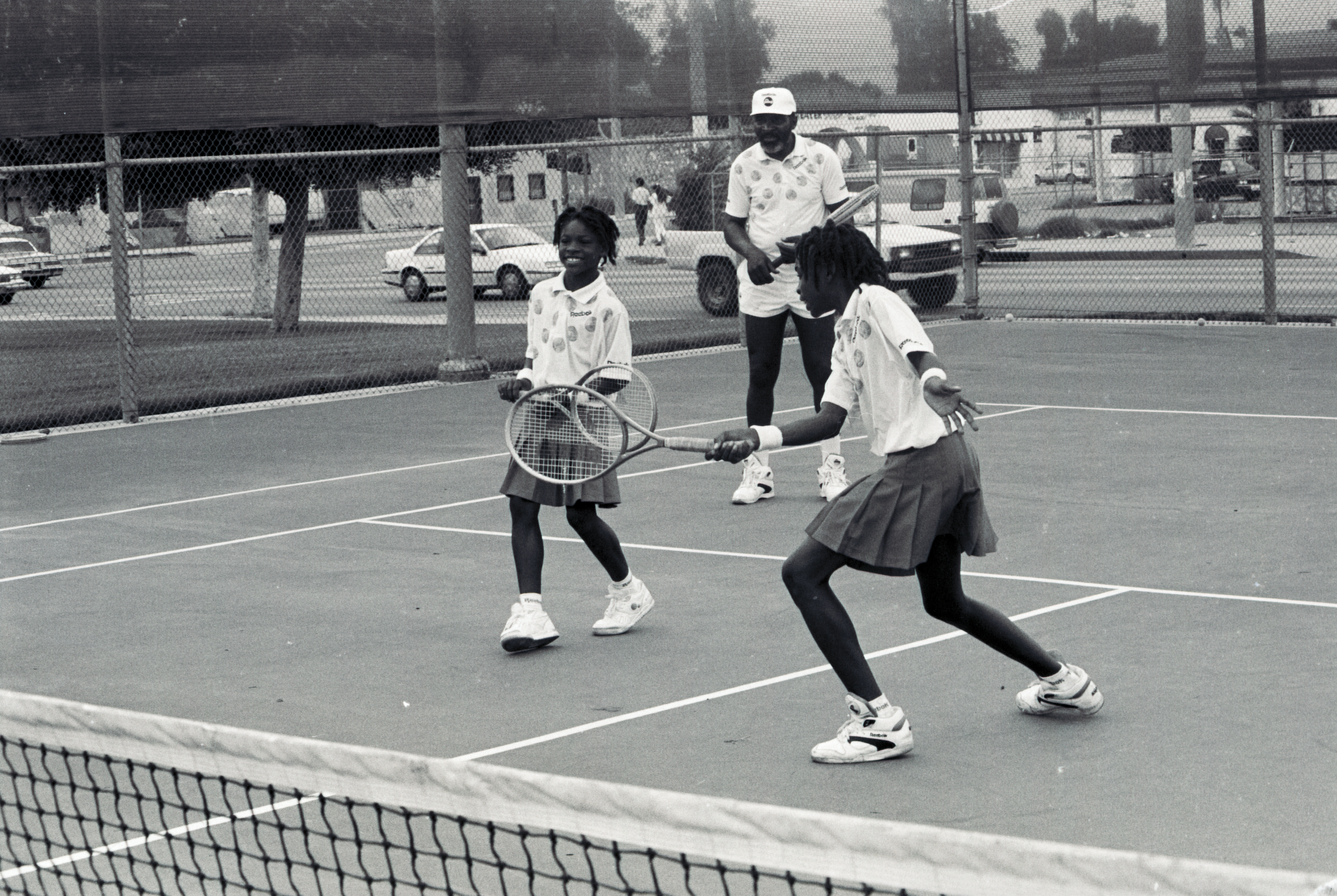
The black-and-white stills represent the spirit rendered by King Richard, the new film starring Will Smith as the Williams sisters’ father, coach and mentor. Collection of the Smithsonian National Museum of African American History and Culture, Gift of Roderick Lyons © Roderick Lyons
Thirty years ago, photographer Rod Lyons got a mundane assignment from his editor at Wave Community Newspapers, publisher of seven weeklies for Black and Latino communities in Los Angeles County. A young, Black athlete in Compton was making a name for herself on the tennis court, so Lyons grabbed a 35mm camera to get some action shots for the next edition. It was as basic as sports photojournalism gets.
“Where I was sent to shoot an up-and-coming tennis player was interesting because [the sport’s] ’70s [to] ’80s boom was over, so [tennis] wasn’t that popular overall, and you certainly didn’t see Black people in Compton out there playing. But other than that it was no big deal,” Lyons recalls. “I got there and started taking pictures of two young sisters named Venus and Serena, 12 and 10, taking lessons from their father, Richard. The practice session was disciplined and intense. Richard was really coaching ’em up that day, but he wasn’t dictatorial, and [he] treated his daughters with kindness and respect.”
Fourteen Lyons photos make up the Serena and Venus series in the collections of the Smithsonian’s National Museum of African American History and Culture (NMAAHC). The photo collection is a mix of on-court instruction between Richard and his daughters and the sisters posing and goofing around without their dad after practice ended.
“Historically, it’s gratifying to have photographed the Williams sisters so early, but had I only known what these two little girls were going to become,” says Lyons ruefully.
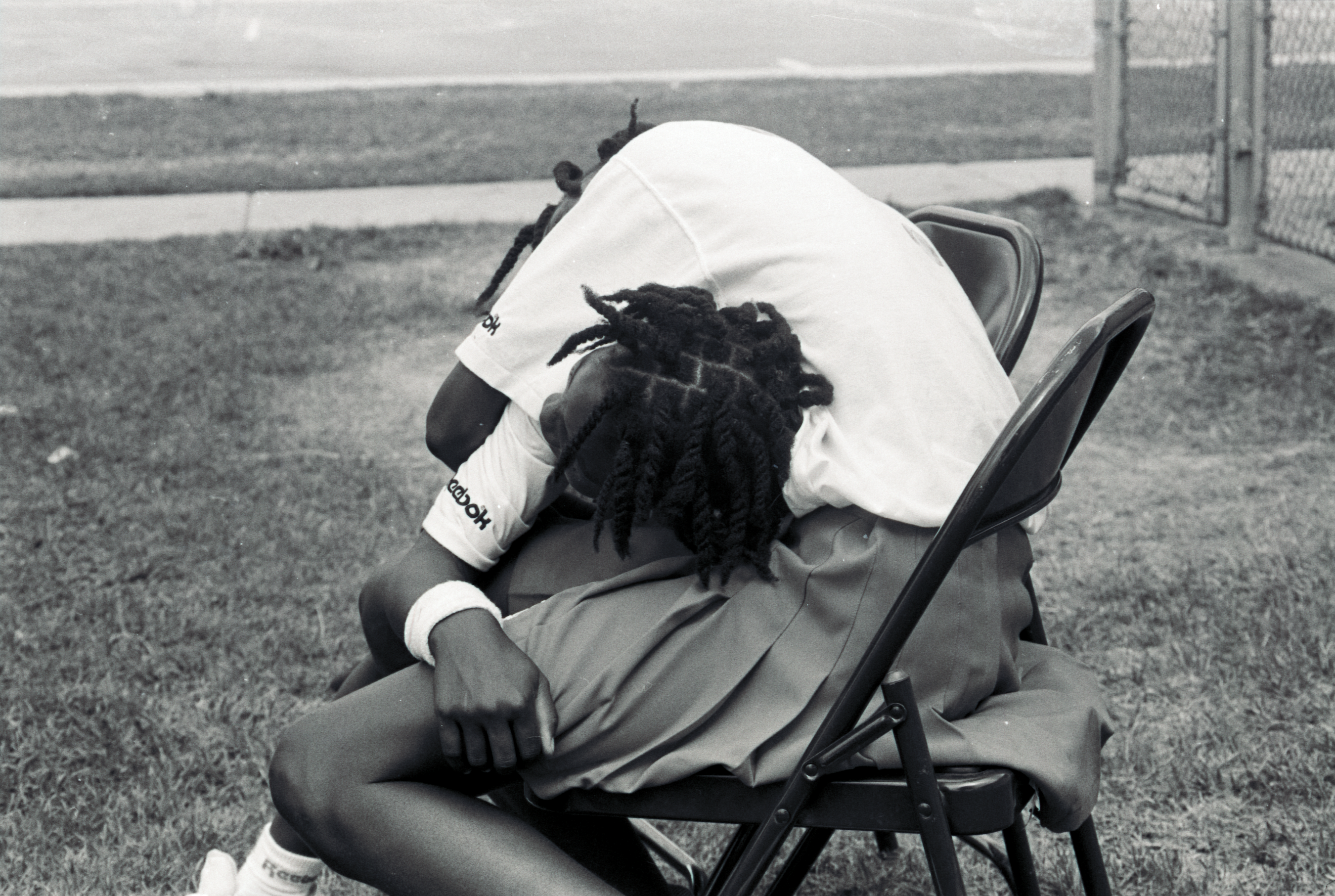
The off-court shots, particularly the one of them lying on each other, radiate the joyful, sisterly bond Lyons witnessed. Their love for the sport, and the man teaching them the game, is as strong as their forehands would become.
Briana Foust, co-host of the tennis podcast “One Additional Challenge” and the originator of the #BlackPeopleSavingUSTennis hashtag, thinks fondly of one photo of the sisters, with Serena smiling at the camera and Venus looking off to the side. “It embodies their personalities that we know now. I love the childlike innocence of the future hall-of-famers.”
“What I see in the photos is two kids enjoying themselves,” says Damion Thomas, the sports curator at the museum.“Too often in sports we get caught up in the business side of things, or who’s won the most championships, but we forget, for kids, sports is about spending time with our friends and loved ones in a form of play. Here we have young Venus and Serena having a good time with their favorite other person in the world.”
Altogether, the black-and-white stills represent the spirit rendered by King Richard, the new film starring Will Smith as the Williams sisters’ father, coach and mentor. Last week, the movie had a splashy NMAAHC red-carpet screening before opening nationally to rapturous reviews (and a few pointed dissents). Produced by Venus and Serena (portrayed by effervescent on-screen counterparts Saniyya Sidney and Demi Singleton, respectively), King Richard is a rousing, warm and inspirational crowd-pleaser that doesn’t shy away from their father’s complicated legacy. Was he an overbearing, in-over-his-head presence in the girls’ tennis development—as contemporary news reports led the nation to believe—or was he a loving, unorthodox, visionary father who put his daughters’ incredible lives and careers first?
Smith portrays Williams with all his attributes: dedicated, devoted, irascible, forthright and oft-confounding, a man who never wavered in his affection for, and belief in, Venus and Serena. Legend has it that Richard, who was raised in poverty, was flipping through television channels when he saw a tournament winner getting handed a $30,000 check—the same amount as his annual salary. Williams then famously drafted a 78-page blueprint to take his daughters to the top of the tennis universe, before they were even born. He steered a quixotic course in the face of racism and condescension from the white, insular tennis establishment and media to the duo’s phenomenal accumulation of 30 Grand Slam singles titles, 14 Grand Slam doubles titles as partners and 4 Olympic gold medals. Even as he was bucking every tennis tradition in the book—including pulling the girls out of the junior circuit, thereby foregoing match play experience—father knew best.
“Tennis was one of the first to professionalize youth sports. Girls barely in their teen years like Martina Hingis and Jennifer Capriatti were becoming paid, professional stars,” says Thomas. “Richard saw how damaging it could be for kids to bear the weight, pressure and stress, so he tried to find a balance for his daughters. Getting them ready to compete while also protecting their youth. That’s hard to do. As a Black man of that generation, Richard had to see a way nobody else saw, to find opportunity against overwhelming odds, because he was challenging the status quo.”
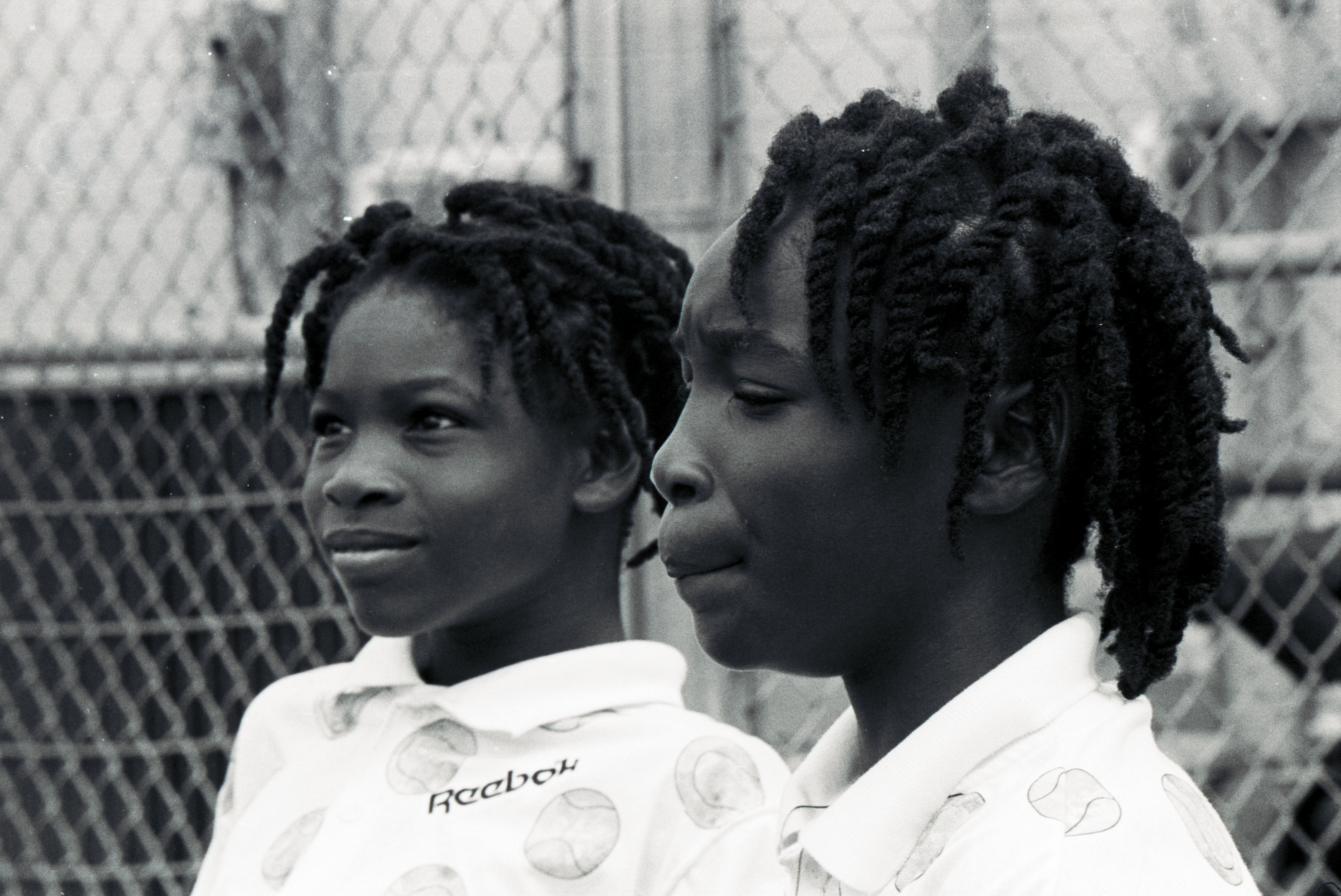
Richard was basically a self-taught coach, and not being part of the tennis mainstream ended up paying a huge dividend through his daughters’ style of play. The girls learned on dilapidated courts littered with broken beer bottles (some tactically laid out by Richard himself); in a park taken over by gang members; and in a violent, overpoliced neighborhood best known at the time as the home of hip-hop group N.W.A. The setting left country club style and manners in the Har-Tru dust. It wasn’t just the color of the Williams sisters’ skin and the beads in their hair that riled up the old guard—it was also that they attacked the ball with force and without abandon.
“The fact that the Williams sisters were so unapologetically Black in their presentation was shocking and very important to a lot of people,” says Thomas. “For a long time, what made women’s sports culturally acceptable was [that] they maintained a feminine image. In tennis, that meant serve-and-volley. Richard taught his daughters the power game, so being outsiders was an advantage because nobody put limitations on the aggression and expression in Venus and Serena’s games.”
The movie is ostensibly Richard’s story, but as far as the sisters go, it still may come as a surprise that Venus’ rise takes the spotlight and Serena is somewhat shunted to the baseline. The film ends in 1994 at the Oakland Bank of the West Classic, Venus’ first professional tournament. In the movie, Richard says having the older sister debut first was part of his plan because while he knew Venus would achieve greatness, he believed Serena could achieve GOATness. (Which, give or take Steffi Graf and Martina Navratilova, she did.) Though the anecdote feels apocryphal, it’s how Lyons remembers it.
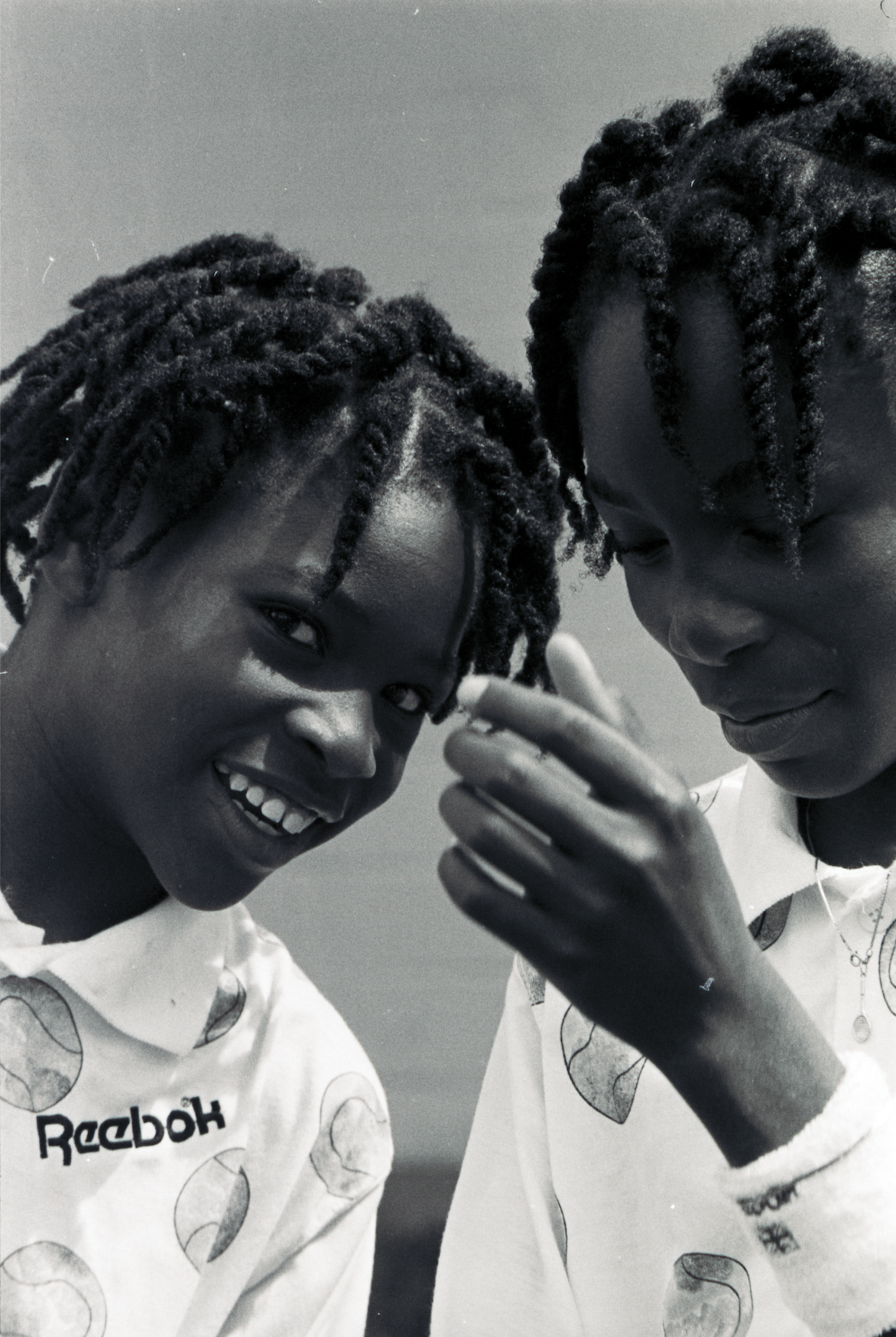
“I was sent to shoot Venus, it was all about her at that time, she was the budding young star, undefeated at juniors,” he says. “I only chatted with Richard for a few minutes, he touted Venus’s talent of course, but I distinctly remember him saying, ‘The only person who ever beats her is Serena.’”
Venus made her first Grand Slam Finals appearance in the 1997 U.S. Open and won her first at Wimbledon in 2000. Two years later, she would become the first African American woman to be ranked number one in the sport. Serena beat her to a Grand Slam championship, winning the 1999 U.S. Open at 17. They were relatively even for a while, but Serena became utterly dominant in the 2010s. It was a span that saw Serena win 89.3 percent of her matches, take home 12 Grand Slam singles titles and be ranked number one for 196 weeks—more time spent atop the sport over the decade than the next two women combined.
The odds of two athletes in the same family becoming all-time greats in any sport is astronomical even before factoring in the obstacles their very American experience put before them. It’s as remarkable a sports story as ever existed, but the unbelievability of it actually happening in the first place is that it only works as a sister act. American tennis has long been predominantly white (and still is on the American men’s side), expensive and isolating. It gets all the more lonely and challenging when ”You play a sport and don’t see a lot of yourself out there,” as journeyman tennis player Donald Young told the Undefeated in 2019. Richard’s prophecy was only fulfilled because Venus and Serena have each other.
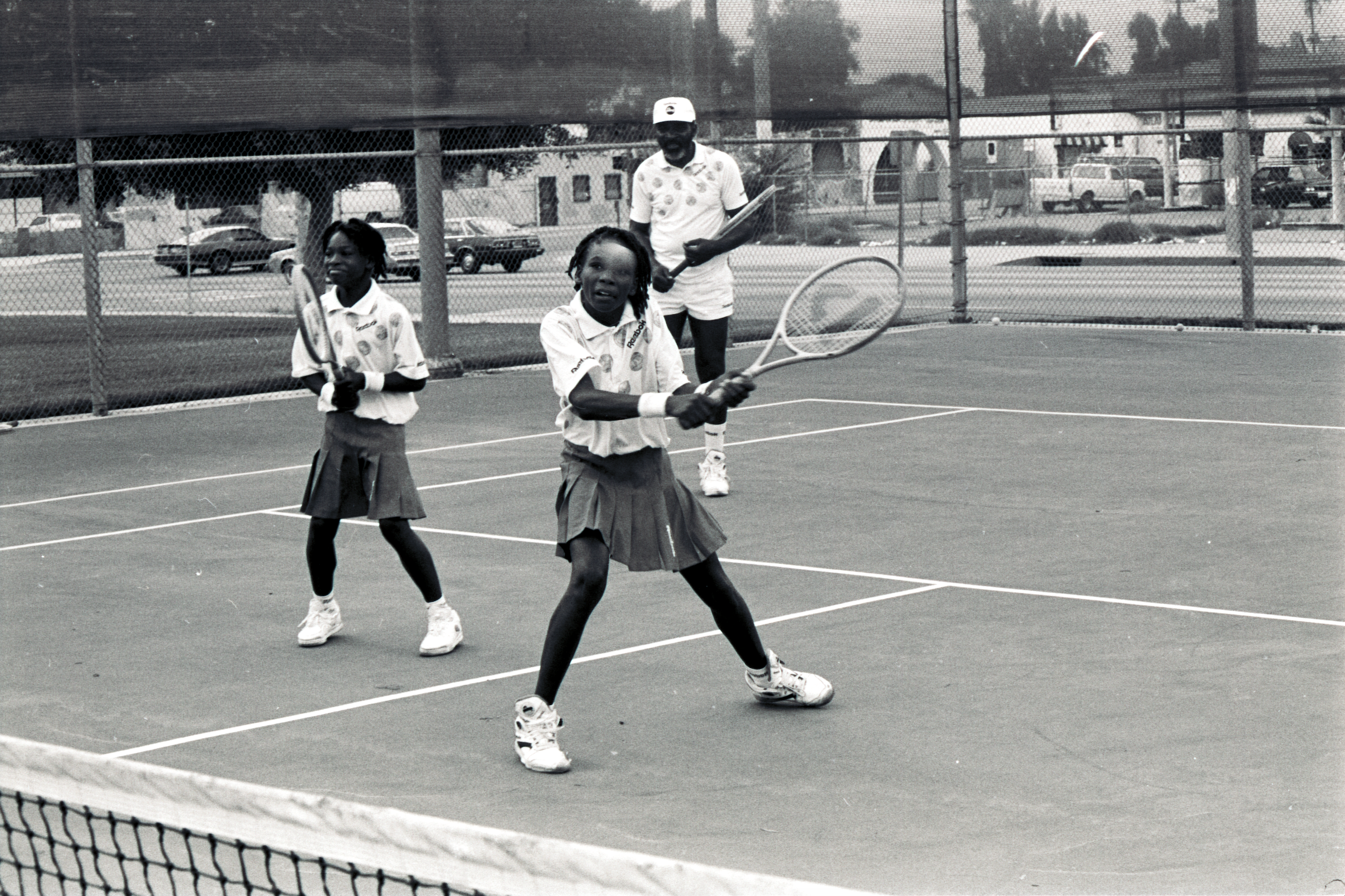
“Somebody by your side who understands what you’re going through, notices subtle changes in your game and has been through the same experiences on the big stage is incredibly powerful,” says Thomas. “The bond between Venus and Serena accounts for why, even at the height of their success, some of the worst matches they played were against each other. Beating your sister to win Wimbledon stirs up a lot of emotions.”
The Lyons photos pay tribute to the beauty and thrill of youth, of lives just beginning to unfold. But they also provide a melancholic reminder that time waits for no tennis woman. Venus and Serena are still playing, but those young girls soon to set the world on fire are now middle-aged women—one with a racket-wielding daughter of her own—heading into the sporting sunset.
“Like Richard says in the film, Venus and Serena using their gifts to break barriers in tennis will inspire millions of people to go after their own dreams, which they did,” says Foust. “They are not just examples of amazing athletes, they are also multilingual, successful businesswomen. They embody how to thrive as a single woman or as a mother. As a fan, their achievements are a testament that anything in life is possible.”
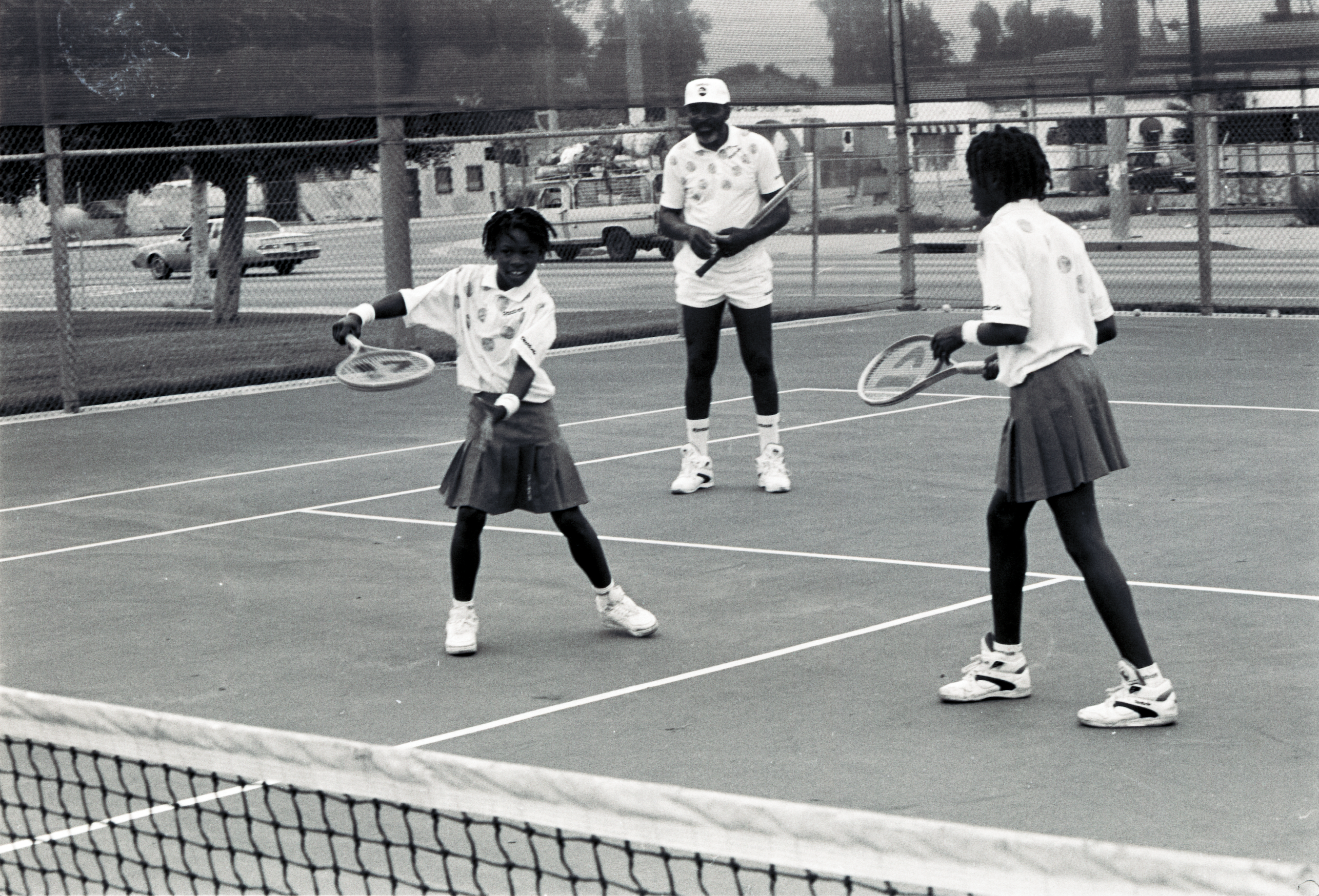
Cemented on the courts, the sisters’ legacy is brought forward by a proliferation of African American women in the Women’s Tennis Association. It also resides at the Smithsonian for future generations to see. Prior to the King Richard screening, Venus toured NMAAHC for the first time.
“She’d never seen the statue of her and Serena. It was a thrill to see the look of surprise and wonder on her face,” says Thomas.
Whether in Smithsonian bronze, on the silver screen or in digital prints of photographs taken a generation ago, the Williams sisters remain all aces.
Get the latest History stories in your inbox?

Raised in Billings, Montana, Patrick Sauer is a Brooklyn-based freelance writer who primarily covers sports, history and sports history. His work has appeared in the New York Times, Smithsonian, Defector, Los Angeles Times, Montana Quarterly and countless publications that no longer exist.
Rod Lyons has had work published in several publications including the Los Angeles Times, Lenswork and Black and White magazine. His work has also been accessioned in public and private collections including the California African American Museum of Art and the Smithsonian’s National Museum of African American History and Culture.
Serena Williams, with or without a baby, has always been a ‘real woman’

I remember gasping upon seeing it. Serena Williams’ pregnant belly had popped, and there it was, along with the rest of her — glamorous, wind-swept, nearly nude, elegantly trolling us with a glance back to August 1991.
First thought: This b—- betta WERK.
Second thought: Eat your heart out, Demi.
On Friday, the 35-year-old Williams gave birth to her first child, a girl, at St. Mary’s Medical Center in West Palm Beach, Florida. She entered the hospital Wednesday, claimed an entire floor of the maternity wing and was induced Thursday evening. She and her fiancé, Reddit co-founder Alexis Ohanian, 34, have been engaged since December 2016. The birth of the Williams-Ohanian baby marks the culmination of several months of famous-mommy-to-be hullabaloo for America’s greatest living athlete. Said hullabaloo allowed us to re-engage with all our worries, anxieties, hostilities, unsolicited opinions and concern-trolling about Williams and that magnificent body of hers that will never allow her the luxury of being a shrinking violet, even if she wanted to be one.
Fortunately for us, Williams was more than happy to publicly exult in her knocked-up condition, gifting audiences with glossy, high-profile photo shoots in Vanity Fair, Vogue and Stellar, the magazine of Australia’s Daily Telegraph. There was the #squadgoals baby shower that doubled as a sock hop, an appearance with Ohanian at the Metropolitan Museum Gala in a silky, jewel-toned gown that breezily skimmed her swollen belly, and plenty of Instagram pics showing off her tummy’s transformation. This was how Williams, tennis player extraordinaire, fashion maven and certified friend of Anna Wintour, was going to publicly perform her pregnancy: with aplomb. In the course of an unexpected pregnancy, Williams stumbled upon an opportunity not just to express herself but to once again reassert and broaden definitions of beauty.
Related Stories
- Explaining Beyoncé’s public performance of pregnancy and motherhood
- Black tennis history
- Serena and Venus are the best siblings in sports history
- Serena Williams is the greatest of all time
- The Undefeated Serena Williams Syllabus
- Serena’s Best On-Court Fashion
It was refreshing to see her so nakedly happy and maybe, just maybe, enjoying the opportunity to tweak some of her rivals and twirl on her haters. After all, Williams just so happened to “accidentally” share the news of her pregnancy with a photo on SnapChat the same day as her rival Maria Sharapova’s birthday.
For as long as she’s been in the public eye, Williams has been asserting her femininity because for just as long, it’s been under attack. Williams is well-aware of her public image and the critiques of it. And while she’s come to a level of comfort and acceptance with herself, she’s also bristled for years over the conversation about her physique and her athleticism. So for her, a pregnancy was more than a chance to welcome a new life into the world. It was an opportunity to assert, once and for all, something that should be obvious: that, yes, Serena Williams is indeed a “real woman.”
It doesn’t take a gender studies major to understand that the standard of femininity that exists for American women is centered on whiteness. And not just any kind of whiteness, but a delicate, blond, thin, toned-but-never-overly-muscular, WASP-y whiteness. Lady lumps are welcome, as long as they don’t protrude so much as to give the impression of cheapness or signal a tawdry lack of control over one’s body or eating habits.
It’s a rigid standard that, despite our recognition of it, has continued to hold firm. And so, even though Williams is in a class of her own as a tennis player, Sharapova nets more in endorsement deals because she’s more “marketable.” This despite her 15-month suspension for using a banned drug.
Which brings us to Vanity Fair.

When Moore appeared on its cover in 1991, nude, pregnant and head turned just so as she stared into the middle distance, it was a pivotal moment in the way our society thought about women’s bodies and pregnancy. Being visibly pregnant was — well, it was a really obvious indication that a woman had had sex. For decades, pregnant celebrities were expected to make themselves scarce as they carried, and here was Moore, flaunting her fecundity all over the newsstands. It marked the moment that pregnancy, at least for celebrities, could be a publicity asset. It could be sexy and daring and provocative, and you didn’t have to cover it up in a series of unflattering muumuus a la Princess Diana — if you were white.
In 2013, Olympic beach volleyball gold medalist Kerri Walsh Jennings posed for ESPN The Magazine’s annual Body Issue.” She did two shoots, both nude: one while pregnant and one postpartum, cradling her sleeping baby against her body. Moore basically opened the door for images like those to exist and not be a big deal.
But there was a double standard for black celebrities. Twenty-six years after Moore’s momentous cover, Williams and Vanity Fair took a shot at that double standard by overtly referencing it. Williams’ pose wasn’t an exact replica — it was a little more defiant. The hand bra, as the pose came to be known, was the same, but Williams had her free hand cocked on her hip. In contrast to Moore’s relatively short locks, Williams was Lady Godiva, staring head-on into a wind machine out of frame. She’s completely in profile, rather than facing the camera. And she’s not quite naked. Instead, she’s wearing a belly chain over a thong matched to her complexion.
But more than anything, like Moore, she was hugely, roundly, unmistakably pregnant. For Williams, pregnancy provided a way to announce and assert her femininity, something she’s been doing over the whole of her career.
In an August interview with Stellar, Williams told the magazine, “I am about to be a real woman now, you know? It’s going to be something incredibly impressive to go through.”
It seemed like an innocuous quote, especially if you were familiar with the attacks that Williams has endured for decades about her looks. But some didn’t see it that way, and slammed Williams. “Didn’t know I had to have a baby to be a “real woman”..thanks for letting me know,” sniped one Twitter user.
Williams shares an unfortunate sisterhood with Michelle Obama. They’re both high-profile black women who have been repeatedly subjected to racist, sexist insults suggesting that they’re not real women, or that they’re not even human. Both have withstood barbs about their bodies simply because they don’t conform to WASP beauty standards.
During the 2016 presidential campaign, The Washington Post ran an interview with a Donald Trump supporter in western Pennsylvania who believed Obama “could be a man.” It’s a rumor that’s followed Obama since she entered the national spotlight, and it continues even though she’s returned to her role as a private citizen.
Opponents insulted Obama by calling her “Moochelle” and insisting she was overweight. A West Virginia official was suspended from her job after posting on Facebook, “It will be refreshing to have a classy, beautiful, dignified First Lady in the White House. I’m tired of seeing an ape in heels.”
Because of her muscular physique, her aggressive style of play and her blackness, Williams has weathered similar accusations. Williams couldn’t even escape “misogynoiristic” comments from professional journalists. In 2009, Jason Whitlock, then a columnist for Fox Sports, called Williams lazy and fat, compared her to a horse and accused her of “grazing at her stall between matches.”
When Williams won Sports Illustrated’s Sportsperson of the Year designation in 2015, she had to face the fact that a number of sports fans were angry that she took the honor over American Pharoah, a horse — which, being, you know, equine, was not a sportsperson.
]]>